ConnectEd Links Learning to Career Pathways
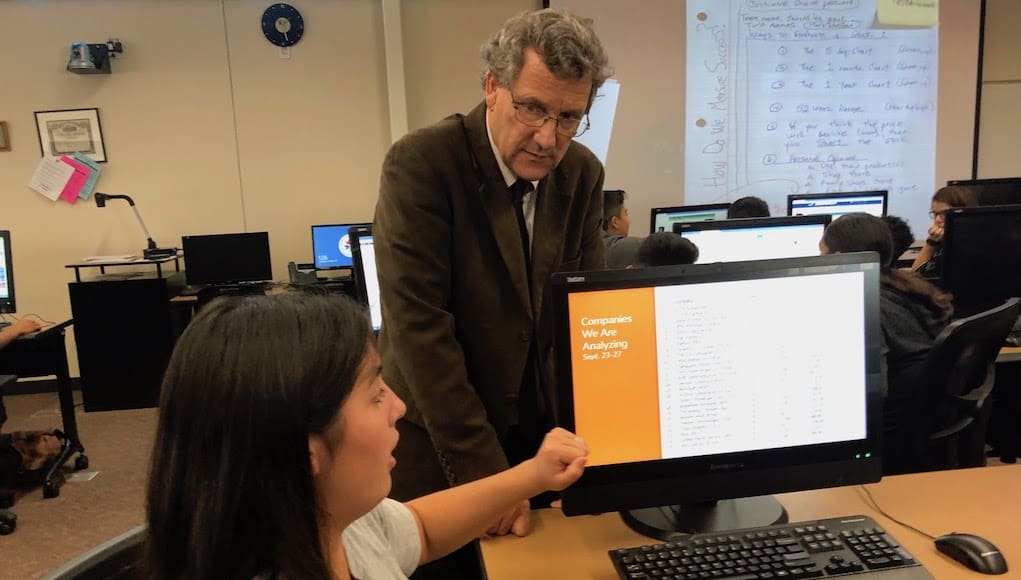
Want to improve the outcomes of your big urban high school? ConnectEd has a bundle of common-sense reforms that improve graduation rates and college and career preparation.
The formula includes clarifying what graduates need to know and be able to do to succeed in college, career and life, build support systems and implement college and career pathways to help teacher teams create coherent applied learning for a cohort of students.
The program, called Linked Learning, was designed by the staff of the James Irvine Foundation and launched with a $100 million grant awarded to nine California districts.
ConnectED has taken the program national through long-term often grant-funded district partnerships. This month we observed two of these partnerships in action.
Clairemont High, San Diego
In the northern suburbs of San Diego Clairemont High School (@clairemont_high) serves 900 students. More than half live in or near poverty.
With support from the Moxie Foundation in 2015, the Clairemont staff implemented career pathways in 2015. Students in the four academies–business, engineering, health and IT– take a sequence of core and career classes together in a 4×4 schedule. With the help of industry partners, teachers use project-based across the curriculum.
With a menu of options, the staff is aggressive about involving business and community partners in career exploration, work-based learning, client connected projects, and school and student supports. Partnerships were the big push in the second year of implementation (2017-18).
Eleventh graders have a monthly meeting with a career path mentor (4 students to each business mentor). Interns visit their career path site three times a week for 10 weeks. Employers receive a handbook and some training for how to best support and supervise their youth interns.
Elizabeth Rush, the Academy and Linked Learning Coordinator, created a step by step process for managing mentorships and internships. Systematic preparation ensures that every student has a productive experience.
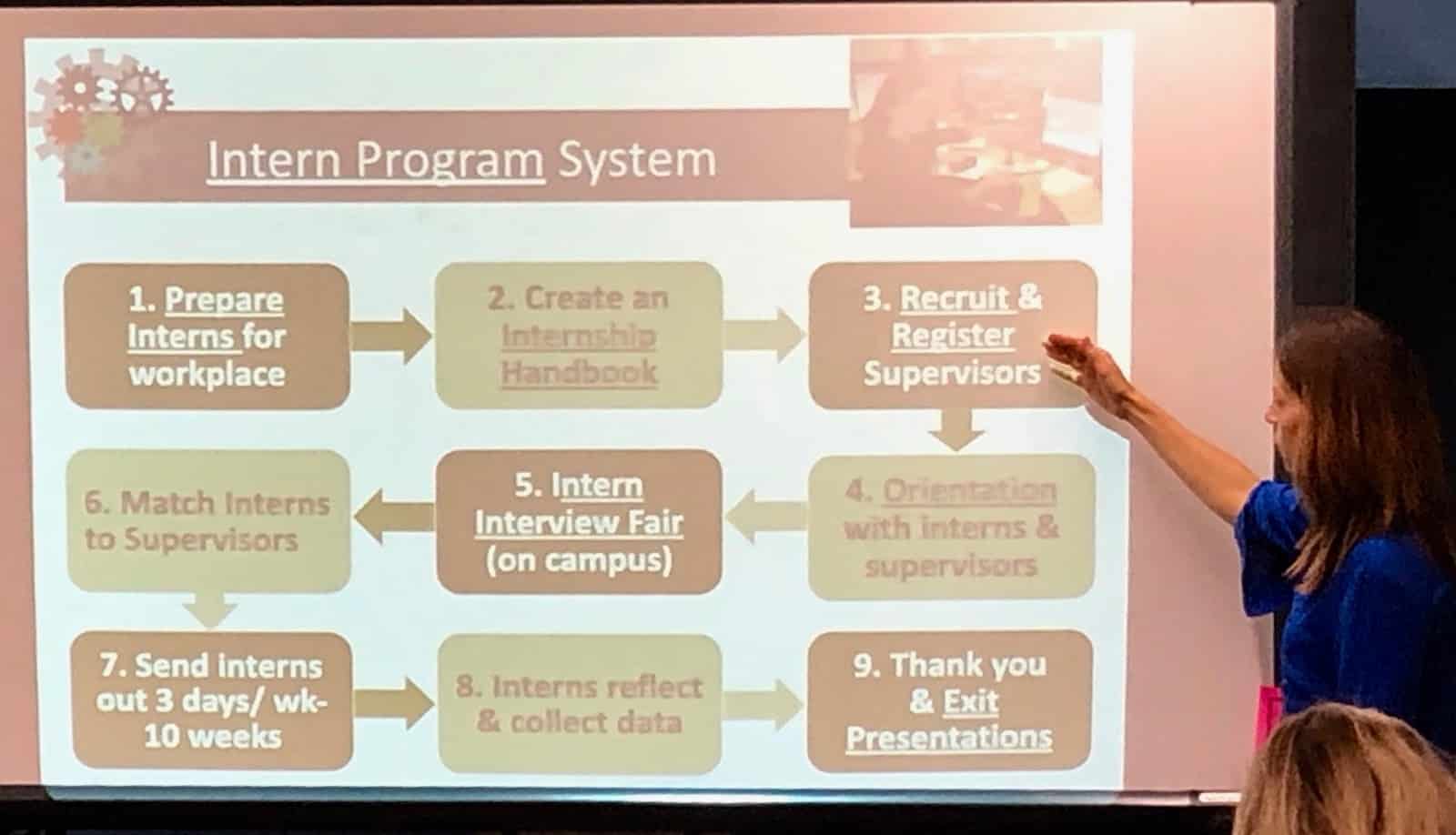
Elizabeth Rush explains Clairemont’s intern program
Students build a portfolio of work, culminating with a senior capstone, that showcases essential career skills, ethical behavior, civic duty, and fiscal responsibility.
Mark Colombo, pictured in the blog feature image, teaches stock market investing in his 11th-grade finance class in the business academy. Business students also take UCSD extension courses that result in a business management certificate.
Freshman in the information technology academy takes an introduction to IT. The day we visited, the freshmen were critiquing games designed by 11th graders. Juniors take a class in Unity, the leading game development platform (and they can earn a certificate if they take and pass the test).
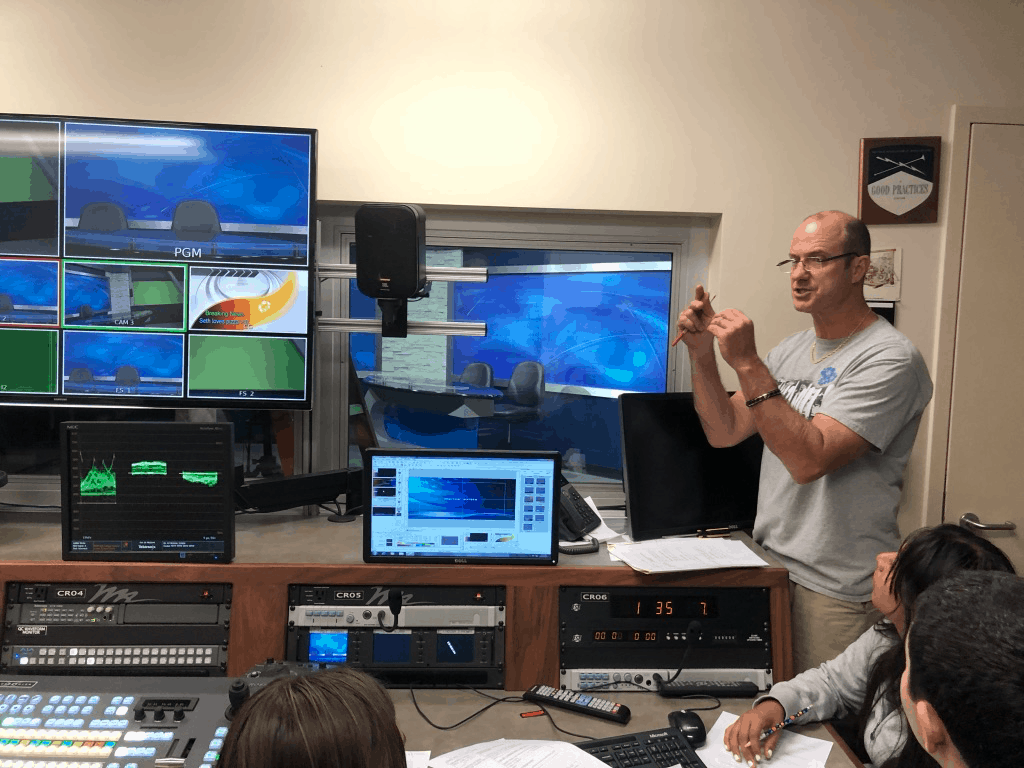
Business Academy Video Production teacher Daren Sparks
Taking Linked Learning National
In 2014, ConnectED began expanding outside of California with major initiatives in Detroit and Houston.
Beginning in 2016, ConnectED (with Jobs for the Future and Education Systems Center) supported high schools in four regions in the upper Midwest through the Joyce Foundation sponsored Great Lakes College and Careers Pathways Partnership (GLCCPP). Case studies show the increased representation of students of color and those with special needs in college and career pathways; more students earning college credit, and more students on track for graduation.
ConnectED is also supporting college and career pathway initiatives in Boston, New Orleans, and Portland, Oregon.
For more see:
Stay in-the-know with innovations in learning by signing up for the weekly Smart Update.



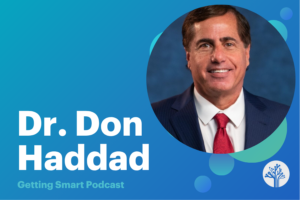
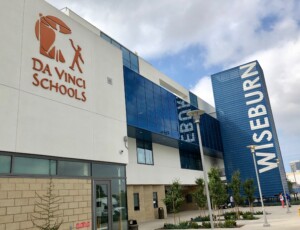

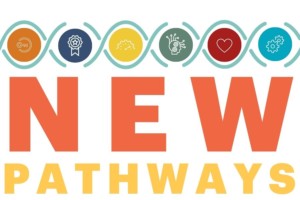
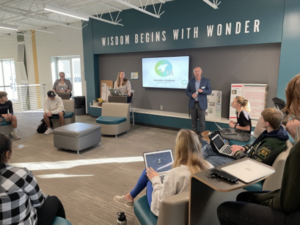
0 Comments
Leave a Comment
Your email address will not be published. All fields are required.